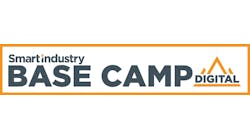By Adam Echter, Partner at Simon-Kucher & Partners
The Industrial Internet of Things is no longer a buzzword on the horizon. Today, devices are collecting and delivering data in real time, with the ability to independently make observations, ensure nonstop monitoring, and support complicated analyses. Huge opportunities are being created both inside and outside of the factory, but too few companies are exploring how the IIoT can be used to improve the customer experience, and ultimately, the top line!
While industrial companies understand the importance of the IIoT, the majority are lagging seriously behind when it comes to monetization. Until now companies have focused their efforts on increased efficiency and cost containment, with improvements made inside the factory’s own four walls. Automation has increased workforce productivity, and sensors have been placed on vehicles and factory floors to improve the supply chain. Indeed, these efforts are extremely worthwhile from an operational perspective, but they will only take you so far. Monetization is a much more pressing task to ensure growth and profitability, now and in the future.
Digitalization and its impact on the product
If industrials businesses know how to do one thing, it’s how to make products and sell them one at a time. However, going forward, we will see a fundamental shift toward digital-driven service offerings for industrial businesses. This will enable charging customers in ways more directly correlated to the value provided—whether it’s on a per-user, per-month, or consumption-based model. Quoting one of my favorite books, Monetizing Innovation, “how you charge is often more important than how much you charge.”
There are several ways that industrials companies can add and charge for value. The obvious move is to add sensors and technology to make a product “digital.” According to Gartner, 5.8 billion IoT endpoints will be in use in 2020. There are also other more-conceptual activities like generating data and layering in software. Over time, physical goods with sensors generate information, which could go on to become more valuable than the machine itself, resulting in a purely information-based, digital product.
The Economist famously made waves with the May 2017 headline “The world’s most valuable resource is no longer oil, but data”. In the more immediate term, there are very few physical goods today that don't have a software element and many of these software components are not being monetized.Think about your own business; you've probably invested more money in computer programs in the last ten years than you've had to in your company’s entire history. So whether you put digital technology on your existing product, create digital products from the information you generate, or add a software overlay, digitalization is opening up a multitude of opportunities to create value.
Still, that doesn’t mean just offering all three and hoping for the best. The key is understanding which innovations resonate with your customers…
Getting connected with customers
Beyond production, digital technologies are extremely beneficial to the revenue-creating side of your business. From the speed at which customer service can react, to the accuracy with which people can look up and find data about your products, the digital age brings new expectations and possibilities surrounding ways to serve the end customer.
Imagine a simple household appliance like a dishwasher. About twenty years ago, the person to call when it broke down would be the local appliance store. Nowadays, the customer looks for the brand manufacturer logo, finds their details online, and gives them a call (or maybe starts a live webchat with customer service). Nobody really cares about the middle man anymore. If your name's on it, today’s consumer expects you to fix it.
This means as a company and a seller you can really get to know your customers. If they are deliberately bypassing intermediaries to engage with you directly, don’t stand in their way. Make yourself available, provide the right online tools, and welcome them to user-friendly interaction. If a sales rep on the phone can quickly cross-reference a customer’s search query and ship the right product at the push of a button, you’ve created a seamless customer experience that creates value.
Meanwhile, customer service, which may have historically been seen as a burden for manufacturers, has become a sales lead. This may be novel for industrial businesses, but it’s core to most software firms. If a sensor indicates that a specific part of a machine is broken, why not proactively approach customers? You either sell them the exact spare part they need, or convince them to replace their machine with a more efficient model. In either case, they have a better experience, deepen their relationship with you, and you win! Digitalization impacts your top line best when you absorb customers into your ecosystem at every step.
Defining and capturing value
Back in the 1970s, talking to customers was possible, but relatively difficult. Paper surveys and ballots via mail made customer communication quite an intimidating task. But one of the transformational effects of digitalization is that today you can send an email to 10,000 people and get hundreds of responses in a matter of days. Collecting feedback on a product-development roadmap is really not as complicated as you might assume. Digitally native companies never think twice about it.
Industrials companies are much less accustomed to engaging their customers or questioning how products add value. This hasn’t historically been required; if a business has been around for 50 or 100 years, why move away from methodologies that have seemed reliable over the decades? The answer…this decade will be different. The only people who can really define the value of your products are your customers. Going forward, engaging your customers and constantly learning how your products create value is the norm and if you’re not doing it, your competition is. If you're not talking to your customers, you'll never really know your product value. You must engage the market.
What does a winner look like?
Tractor manufacturer John Deere is a good example of a firm that has grasped the challenges and opportunities of the Industrial IoT and is firing on all elements:
- Digital technology added to products: Modern tractors are equipped with sensors to direct driving patterns, avoid collisions, and ensure high vehicle efficiency.
- New, fully digital products: When a tractor covers a field, it’s picking up data. This tracking and reports on soil conditions, crop yields, etc. become digital products customers pay for.
- Digitalized customer-facing processes: John Deere invested heavily to improve their spare-parts experience; today customers order spare parts directly via the JDParts web portal.
Monetizing digitalization and connectivity
In the age of the IIoT, it’s not just machines that need to be connected. An even more crucial connection is the one between a company and its customers. If you just sell a product and walk away, you're doing it wrong.
The focus on transactional business is moving over to annual recurring revenue and ongoing relationships—more nurtured and tighter than ever. How many customers are inside your ecosystem? How are you cross- or up-selling and expanding your share of wallet? Are you meeting needs in different ways? These are all important questions that digitalization gives you the power to answer. A machine equipped with sensors is not just a machine equipped with sensors. It is a window to view customer behavior, understand needs, and gain insights on how to create winning products and experiences.
Stay tuned for parts 2 and 3 of this series, where Adam will discuss the finer details of data monetization, as well as new business models for the IoT!

